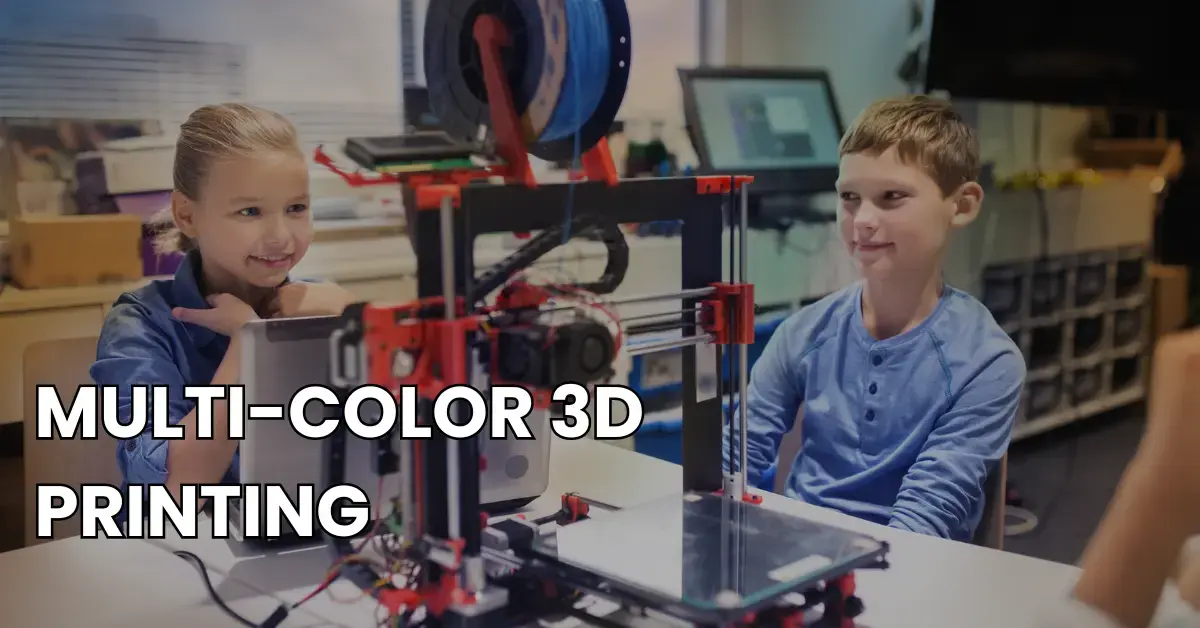Introduction
The introduction will highlight the evolution of 3D printing technology, emphasizing the transition from monochromatic to multicolor printing. It will set the stage for discussing the significance of multiple color 3D printing in various industries, including prototyping, education, and art.
The Basics of Multicolor 3D Printing
Before diving into advanced techniques, this section will cover the foundational knowledge necessary for understanding multicolor 3D printing. It will explain the process and the technology behind 3D printers capable of printing in more than one color.
Understanding Your Printer’s Capabilities
A brief overview of different types of multicolor 3D printers, such as dual extrusion systems, color mixing 3D printers, and printers with multiple independent extruders. This part will help readers identify what their printer can do and the limitations they might face.
Preparing for Multicolor Printing
This section will explain what you need to do to get ready for a multicolor print. This includes thinking about the design, picking the right materials, and using slicing software that works for printing in multiple colors.
Designing for Multicolor Printing
Tips on how to design 3D models for multicolor printing. This includes using software that allows for color assignment to different parts of the model and designing models that take advantage of multiple colors for aesthetic or functional purposes.
Choosing the Right Materials
Guidance on selecting filaments or resins that are compatible with each other and suitable for the intended purpose of the 3D print. This will include tips on how to match materials based on their properties, such as melting temperature and strength.
Advanced Multicolor Printing Techniques
Dual Extrusion Techniques
An in-depth look at how to master dual extrusion printing, including how to calibrate the printer for precise color placement, prevent oozing and stringing, and use support materials effectively.
Color Mixing Technology
This part talks about how 3D printers mix basic colors together to make many different shades and color changes in one print. It will give advice on how to make colors change smoothly and how to avoid problems, like colors that look mixed up or dirty.
Multi-Material Printing
Discussion on the advanced capability of printing with different materials in addition to multiple colors. This will cover the challenges and opportunities of combining materials with varying properties, such as rigid and flexible, in a single print.
Post-Processing Multicolor Prints
Even when you use fancy printing methods, you usually have to do a bit more work on your prints to make them look their best. This part will give tips on how to clean up your prints, take away any support material without messing up the colors, and ways to make your multicolor prints look even nicer.
Troubleshooting Common Multicolor Printing Issues
A practical guide to solving common problems encountered in multicolor 3D printing, such as color bleeding, misalignment of layers, and issues related to filament loading and unloading in dual extrusion systems.
Case Studies: Successful Multicolor 3D Printing Projects
To inspire readers and demonstrate the potential of multicolor 3D printing, this section will showcase several successful projects. It will highlight the techniques used, the challenges overcome, and the impact of using multiple colors.
Conclusion
The final part will go over the main ideas talked about in the article. It will remind you that even though printing in multiple colors can be tricky, learning the advanced methods can really unlock new ways to be creative. It will encourage readers to experiment with their projects and continue learning about the rapidly evolving field of 3D printing.
Additional Resources
I will give you a list of easy-to-use websites, discussion boards, and computer programs. These resources will help you learn more about 3D printing in multiple colors and keep up with new updates in this area.
FAQs:
1. What is multicolor 3D printing?
Multicolor 3D printing is a process that allows you to print objects in more than one color or shade. This can be achieved through various methods, including dual extrusion, color mixing technologies, or using printers with multiple independent extruders.
2. How does a dual extrusion 3D printer work?
A dual extrusion 3D printer has two nozzles that can push out two different colors or materials at the same time. This lets you make detailed prints that have clear color areas or parts that can dissolve.
3. Can I convert my single extruder 3D printer to print in multiple colors?
Yes, there are modifications and attachments available, such as a multi-color 3D printer attachment, that can convert a single extruder printer into a multi-color printer. However, these modifications may require technical knowledge and adjustments to your printing process.
4. What is color mixing in 3D printing, and how does it work?
In 3D printing, mixing colors means combining basic colors like cyan, magenta, yellow, and sometimes black to make many different colors. Printers that can mix colors have a special nozzle. This nozzle mixes colored materials together to make the color you want.
5. How can I design models for multicolor 3D printing?
To design models for multicolor printing, you can use 3D modeling software that supports color assignments to different parts of the model. It’s important to plan your color transitions and ensure your model is compatible with your printer’s capabilities.
6. What are some challenges of multicolor 3D printing?
Common challenges include oozing and stringing between color changes, achieving precise color placement, and managing the added complexity of using multiple materials. Calibration and slicer software settings play crucial roles in mitigating these issues.
7. How do I prevent color bleeding in multicolor prints?
To prevent color bleeding, ensure proper calibration of your printer and use a prime tower or ooze shield. Additionally, fine-tune the retraction settings and purge blocks to clean the nozzle between color changes.
8. What post-processing steps are needed for multicolor 3D prints?
Post-processing can include cleaning up stringing or oozing, removing support material, sanding for smoothness, and applying sealants or paints to enhance color vibrancy and finish.
9. Can all 3D printers print in multiple colors?
Not every 3D printer can print in many colors right away. To print in more than one color, printers need special parts, like several extruders or the ability to mix colors.
10. Where can I find multicolor 3D printing projects for inspiration?
Many online platforms and communities, such as Thingiverse, Cults3D, and 3D printing forums, showcase multicolor 3D printing projects. These sites offer downloadable models and provide insights into techniques and settings used by creators.



